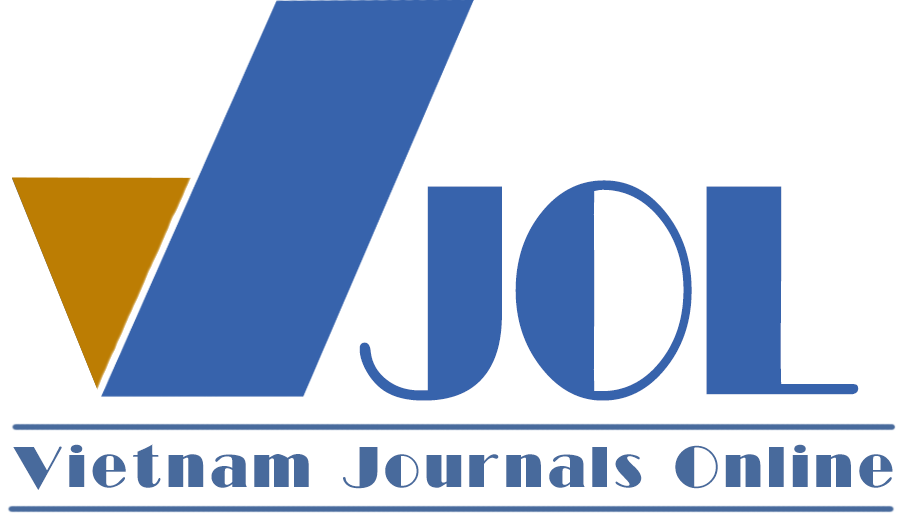Does the shadow economy promote the exploitation of natural resources and cause environmental pollution in Vietnam?
Authors
DOI: https://doi.org/10.57110/jebvn.v3i3.224Keywords:
Shadow economy, natural resources, environmental pollution, sustainable development, VietnamReferences
Alvarado, R., Tillaguango, B., Jaramillo-Alcázar, Á., & Toledo, E. (2022). Impact of the informal economy on the ecological footprint: The role of urban concentration and globalization. Economic Analysis and Policy, 75, 750-767. https://doi.org/10.1016/j.eap.2022.02.016
Bajada, C., & Schneider, F. (2005). The shadow economies of the Asia-Pacific. Pacific Economic Review, 10(3), 379-401. https://doi.org/10.1111/j.1468-0106.2005.00282.x
Baloch, A., Danish, Khan, S. U., & Ulucak, R. (2022). The impact of shadow economy on environmental degradation: Empirical evidence from Pakistan. GeoJournal, 87(3), 1887-1912. https://doi.org/10.1007/s10708-020-10354-7
Biswas, A. K., Farzanegan, M. R., & Thum, M. (2012). Pollution, shadow economy and corruption: Theory and evidence. Ecological economics, 75, 114-125. https://doi.org/10.1016/j.ecolecon.2012.01.007
Blackman, A., Shih, J. S., Evans, D. A., Batz, M. B., & Rivera Planter, M. (2006). The benefits and costs of informal sector pollution control: Mexican brick kilns. Environment and Development Economics, 11(5), 603-627. https://doi.org/10.1017/S1355770X0600306X
Canh, N. P., & Thanh, S. D. (2020). Financial development and the shadow economy: A multi-dimensional analysis. Economic Analysis and Policy, 67, 37-54. https://doi.org/10.1016/j.eap.2020.05.004
Canh, N. P., Schinckus, C., Thanh, S. D., & Hung, N. T. (2019). Global emissions: A new contribution from the shadow economy. International Journal of Energy Economics and Policy, 9(3), 320-337. https://doi.org/10.32479/ijeep.7597
Caridi, P., & Passerini, P. (2001). The underground economy, the demand for currency approach and the analysis of discrepancies: Some recent European experience. Review of Income and Wealth, 47(2), 239-250. https://doi.org/10.1111/1475-4991.00014
Chaudhuri, S., & Mukhopadhyay, U. (2006). Pollution and informal sector: A theoretical analysis. Journal of Economic Integration, 21(2), 363-378. https://doi.org/10.11130/jei.2006.21.2.363
Chen, H., Wang, Z., & Zhong, Z. (2018). The impact of environmental regulation, shadow economy, and corruption on environmental quality: Theory and empirical evidence from China. Journal of Cleaner Production, 195, 200-214. https://doi.org/10.1016/j.jclepro.2018.05.206
Dada, J. T., Adeniran, A. O., & Ajide, F. M. (2021). Shadow economy, institutions and environmental pollution: Insights from Africa. World Journal of Science, Technology and Sustainable Development, 18(2), 153-171. https://doi.org/10.1108/WJSTSD-07-2020-0066
Dickey, D. A., & Fuller, W. A. (1981). Likelihood ratio statistics for autoregressive time series with a unit root. Econometrica, 49(4), 1057-1072. https://doi.org/10.2307/1912517
Din, B. H., Habibullah, M. S., Baharom, A. H., & Saari, M. D. (2016). Are shadow economy and tourism related? International evidence. Procedia Economics and Finance, 35, 173-178. https://doi.org/10.1016/S2212-5671(16)00022-6
Elgin, C., & Oztunali, O. (2014). Pollution and informal economy. Economic Systems, 38(3), 333-349. https://doi.org/10.1016/j.ecosys.2013.11.002
Goel, R. K., & Saunoris, J. W. (2014). Global corruption and the shadow economy: Spatial aspects. Public Choice, 161(1), 119-139. https://doi.org/10.1007/s11127-014-0207-8
Imamoglu, H. (2018). Is the informal economic activity a determinant of environmental quality? Environmental Science and Pollution Research, 25(29), 29078-29088. https://doi.org/10.1007/s11356-018-2953-1
Kiani, M., Ahmed, R., & Shah, I. A. (2015). Combining qualitative and quantitative approaches for measuring underground economy of Pakistan. Quality and Quantity, 49(1), 295-317. https://doi.org/10.1007/s11135-013-9985-8
Köksal, C., Ulucak, R., & Özcan, S. (2020). The role of shadow economies in ecological footprint quality: Empirical evidence from Turkey. Environmental Science and Pollution Research, 27(12), 13457-13466. https://doi.org/10.1007/s11356-020-07986-6
Kuznets, S. (1955). Economic growth and income inequality. The American Economic Review, 45(1), 1-28. https://doi.org/10.2307/1811581
Medina, L., & Schneider, F. (2019). Shedding light on the shadow economy: A global database and the interaction with the official one CESifo Working Paper No. 7981. https://doi.org/10.2139/ssrn.3502028
Minh, H. C. (2020). Shadow economy and air pollution in developing Asia: What is the role of fiscal policy? Environmental Economics and Policy Studies, 22(3), 357-381. https://doi.org/10.1007/s10018-020-00264-w
Nelson, C. R., & Plosser, C. I. (1982). Trends and random walks in macroeconomic time series. Journal of Monetary Economics, 10(2), 139-162. https://doi.org/10.1016/0304-3932(82)90012-5
Nkengfack, H., Kuete, M., & Nchofoung, T. N. (2021). How does the shadow economy affect environmental quality in sub-Saharan Africa? Evidence from heterogeneous panel estimations. Journal of the Knowledge Economy, 12(4), 1635-1651. https://doi.org/10.1007/s13132-020-00667-1
Ngoc, B. H. (2020). Impact of electricity consumption on CO2 emissions in Vietnam: Symmetrical or asymmetrical? Journal of Asian Business and Economic Studies, 31(2), 45–60. https://doi.org/10.1108/JABES-10-2019-0096
Pang, J., Zhu, X., & Ma, Z. (2020). Interaction between shadow economy and pollution: Empirical analysis based on panel data of Northeast China. Environmental Science and Pollution Research, 27(17), 21353-21363. https://doi.org/10.1007/s11356-020-08649-3
Pesaran, M. H., & Shin, Y. (1995). An autoregressive distributed lag modelling approach to cointegration analysis. Department of Applied Economics, University of Cambridge.
Pesaran, M. H., Shin, Y., & Smith, R. J. (2001). Bounds testing approaches to the analysis of level relationships. Journal of Applied Econometrics, 16(3), 289-326. https://doi.org/10.1002/jae.616
Phillips, P. C. B., & Perron, P. (1988). Testing for a unit root in time series regression. Biometrika, 75(2), 335-346. https://doi.org/10.1093/biomet/75.2.335
Qayyum, U., Danish, & Mehmood, R. (2021). Urbanization, informal economy, and ecological footprint quality in South Asia. Environmental Science and Pollution Research, 28(47), 67011-67021. https://doi.org/10.1007/s11356-021-15011-6
Schneider, F., & Enste, D. H. (2000). Shadow economies: Size, causes, and consequences. Journal of Economic Literature, 38(1), 77-114. https://doi.org/10.1257/jel.38.1.77
Toda, H. Y., & Yamamoto, T. (1995). Statistical inference in vector autoregressions with possibly integrated processes. Journal of Econometrics, 66(1-2), 225-250. https://doi.org/10.1016/0304-4076(94)01616-8
Torgler, B., & Schneider, F. (2009). The impact of tax morale and institutional quality on the shadow economy. Journal of Economic Psychology, 30(2), 228-245. https://doi.org/10.1016/j.joep.2008.08.004
Ulucak, R., & Bilgili, F. (2018). A reinvestigation of EKC model by ecological footprint measurement for high, middle, and low income countries. Journal of Cleaner Production, 188, 144-157. https://doi.org/10.1016/j.jclepro.2018.03.191
Downloads
Additional Files
Published
Abstract View
PDF Downloaded
How to Cite
Issue
Section
License
Copyright (c) 2023 Bùi Hoàng Ngọc, Nguyễn Huỳnh Mai Trâm, Phan Thị Liệu

This work is licensed under a Creative Commons Attribution-NonCommercial 4.0 International License.
by VNU Journal of Economics and Business






